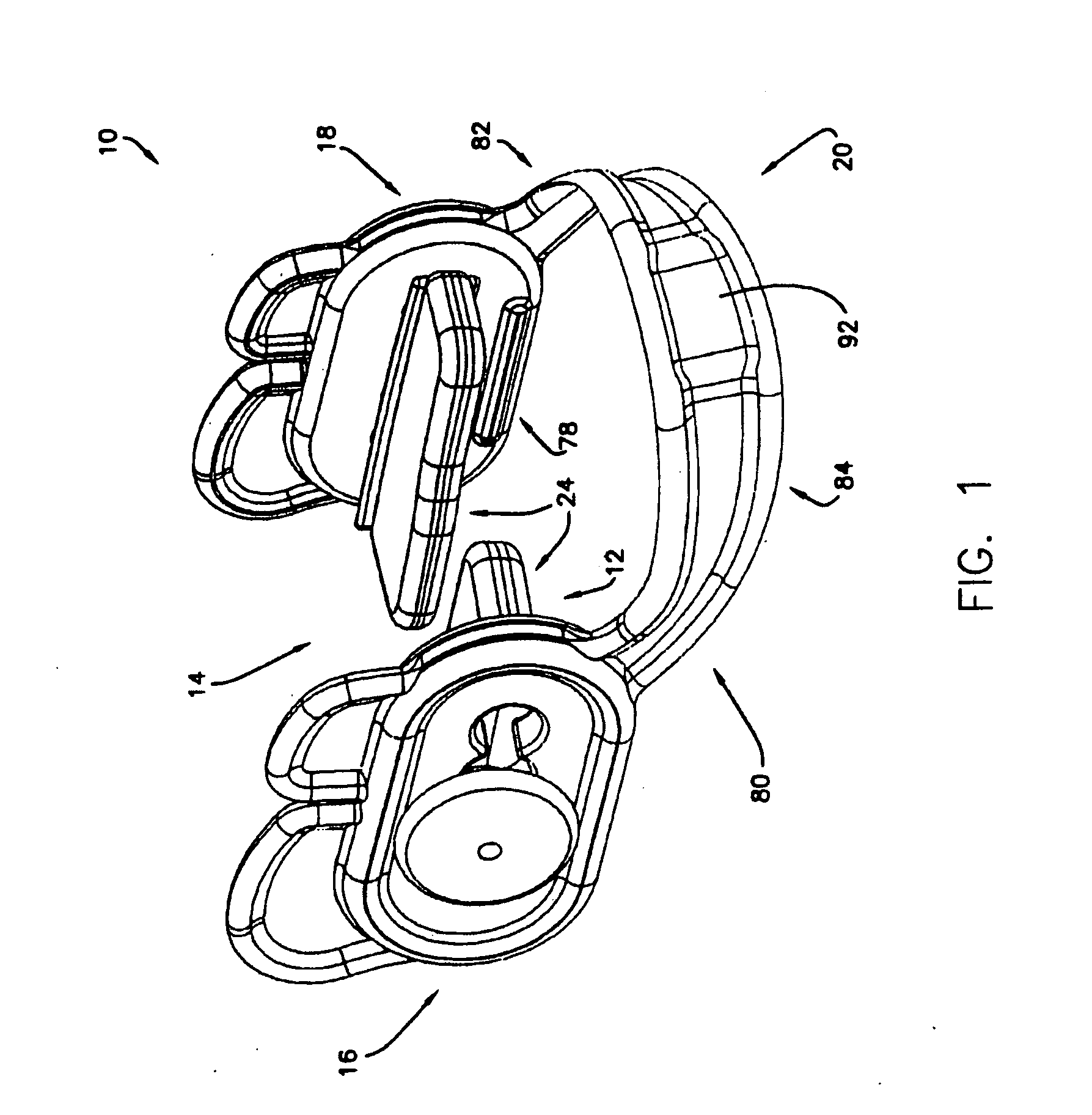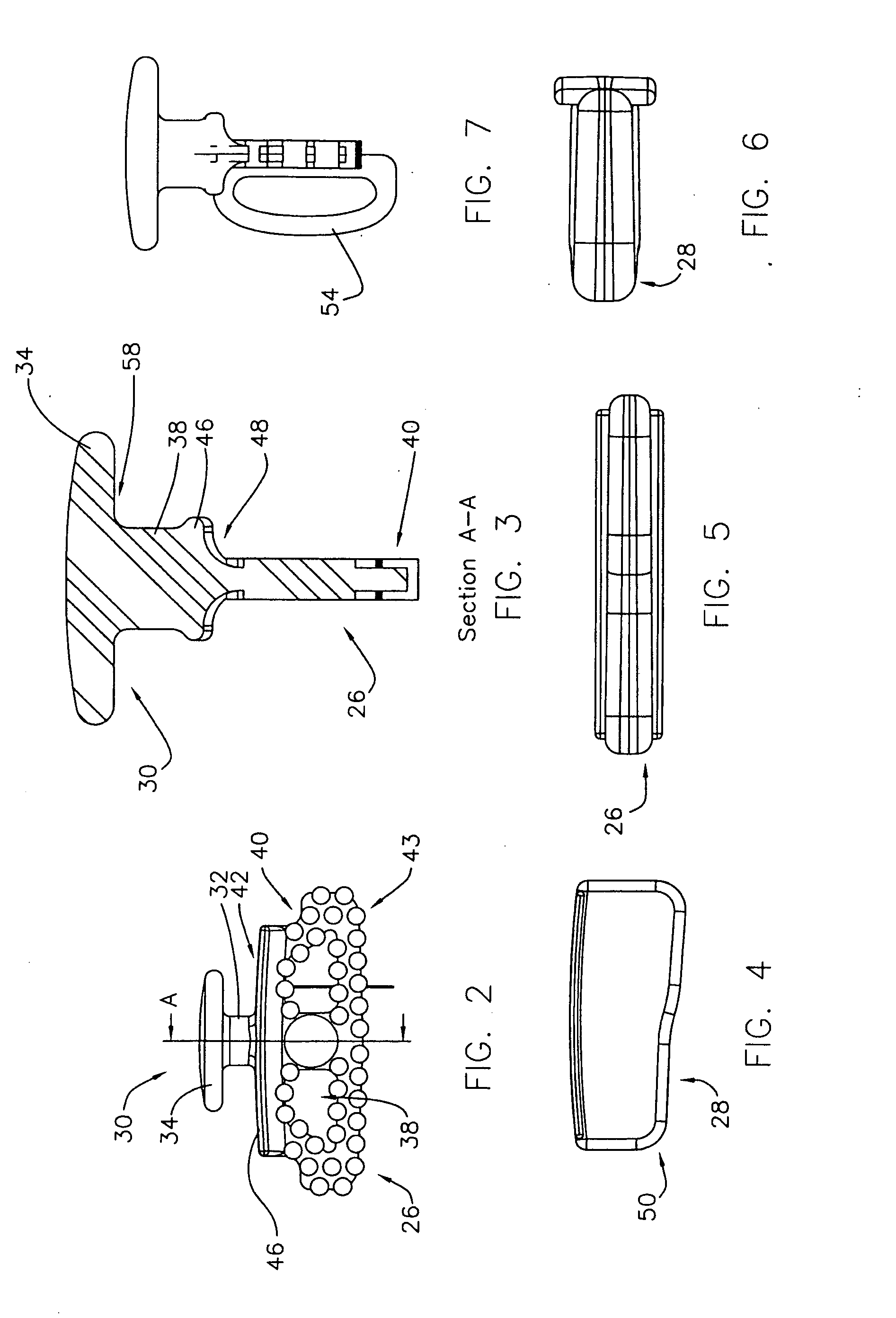Dental appliance for minimizing effects of bruxism
a technology for minimizing dental appliances, applied in the field of dental appliances, can solve the problems of only working appliances, inconvenient use of appliances, and high cost of prior art appliances, and achieve the effect of avoiding or minimizing the adverse effects of bruxism
- Summary
- Abstract
- Description
- Claims
- Application Information
AI Technical Summary
Benefits of technology
Problems solved by technology
Method used
Image
Examples
Embodiment Construction
, below.
BRIEF DESCRIPTION OF THE DRAWINGS
[0014]A preferred embodiment of the present invention is described in detail below with reference to the attached drawing figures, wherein:
[0015]FIG. 1 is an isometric view of a preferred embodiment of the dental appliance of the present invention;
[0016]FIG. 2 is a plan view of a core and pin subassembly of a bitepad assembly of the dental appliance shown in FIG. 1;
[0017]FIG. 3 is a section view through a line AA of the core and pin subassembly show in FIG. 2;
[0018]FIG. 4 is a plan view of an overmold component of the dental appliance shown in FIG. 1;
[0019]FIG. 5 is an elevation view of the overmold component shown in FIG. 4;
[0020]FIG. 6 is a front view of the overmold component shown in FIG. 4;
[0021]FIG. 7 is a front view of the bitepad assembly shown with an optional stabilizer component;
[0022]FIG. 8 is a fragmentary view of a side assembly component of the dental appliance shown in FIG. 1;
[0023]FIG. 9 is a section view through line BB of t...
PUM
 Login to View More
Login to View More Abstract
Description
Claims
Application Information
 Login to View More
Login to View More - R&D
- Intellectual Property
- Life Sciences
- Materials
- Tech Scout
- Unparalleled Data Quality
- Higher Quality Content
- 60% Fewer Hallucinations
Browse by: Latest US Patents, China's latest patents, Technical Efficacy Thesaurus, Application Domain, Technology Topic, Popular Technical Reports.
© 2025 PatSnap. All rights reserved.Legal|Privacy policy|Modern Slavery Act Transparency Statement|Sitemap|About US| Contact US: help@patsnap.com



